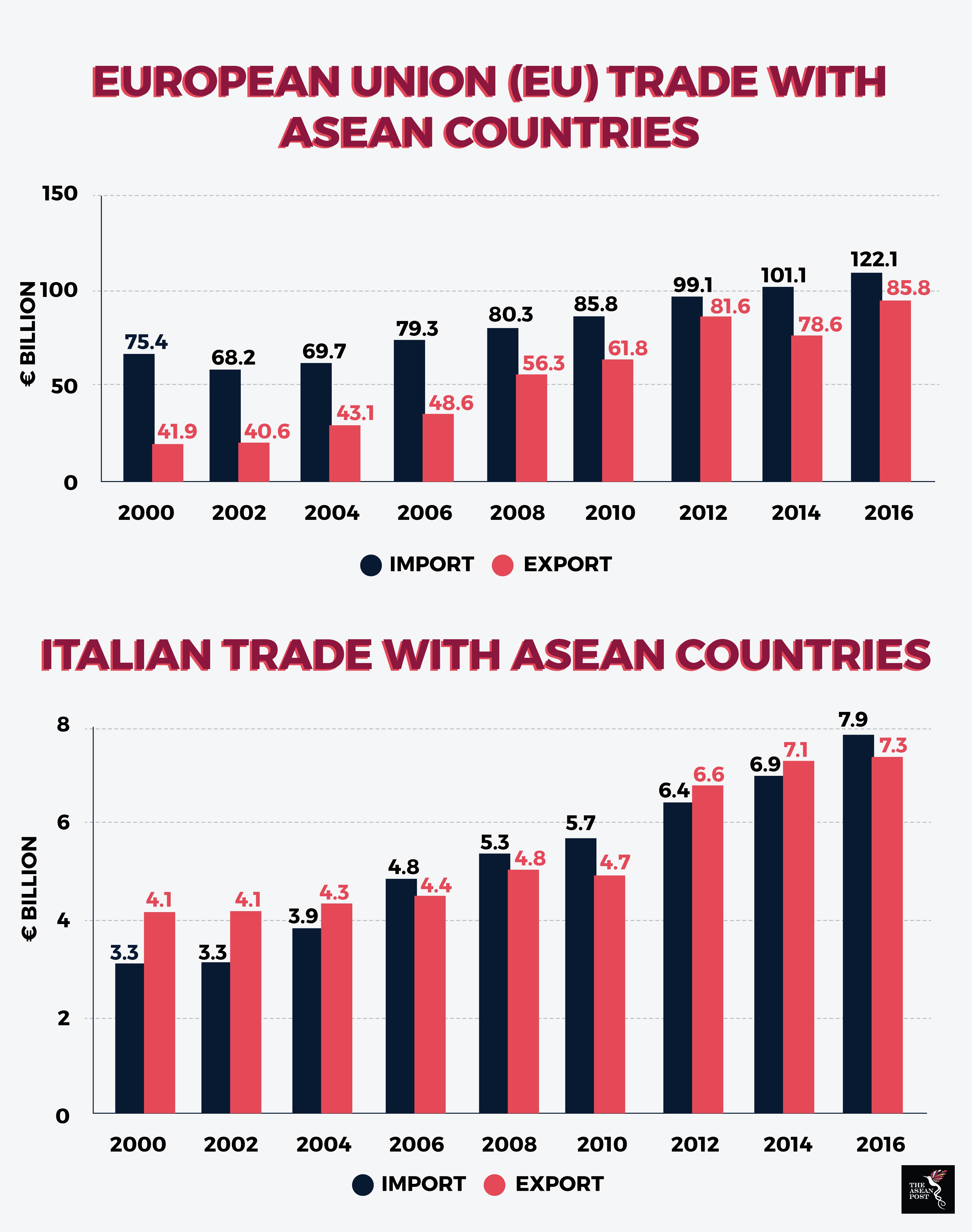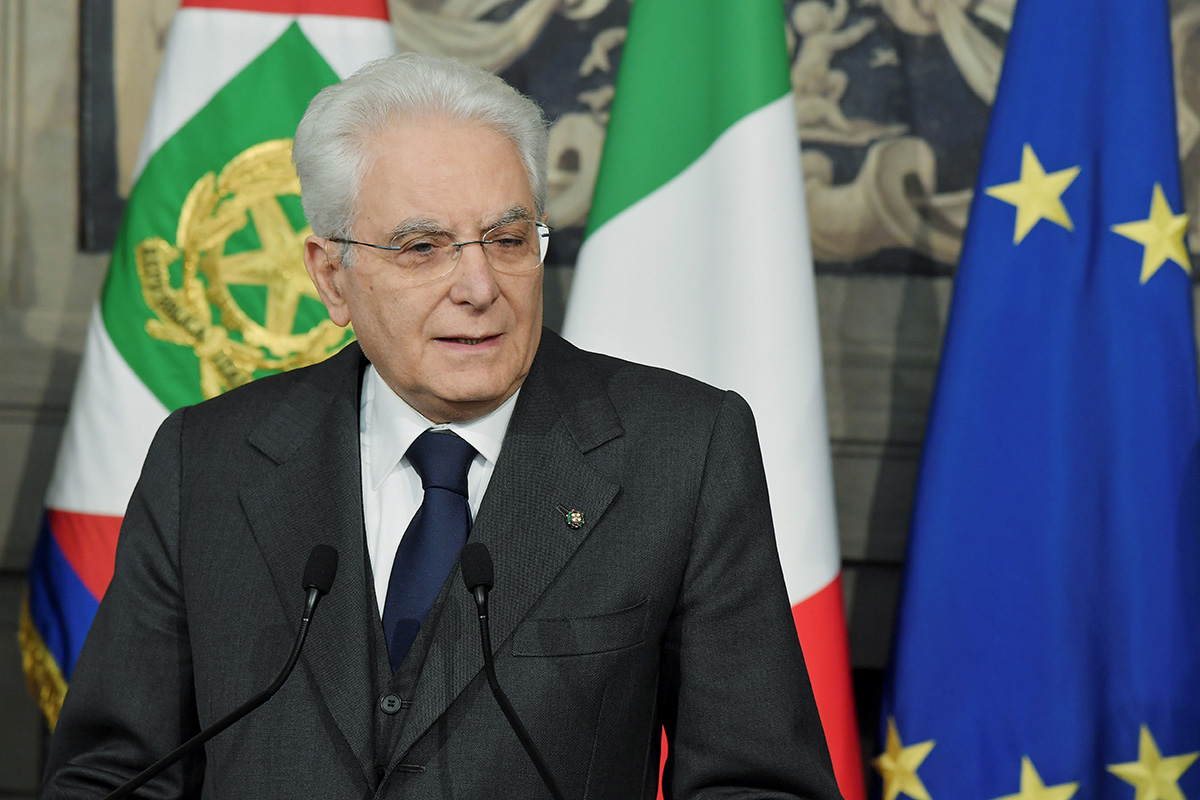From ubiquitous palm oil and rubber estates in Malaysia to long beaches and pristine waters in Indonesia, Southeast Asia is home to a wide array of resources and locations of interest. Italy, a European giant in its own right, is observant of this matter and has realised the tremendous financial potential that the region has to offer.
Considering the fact that the European Union (EU) is ASEAN’s second largest trading partner after China, Italy’s foray into the ASEAN market is certainly not a new endeavour. An example of this is the creation of a strategic partnership between Italy and Vietnam in 2013, with specific attention given to a collaboration in improving small-medium sized enterprises (SMEs), as well as the production of food, machinery, equipment, and agriculture between both countries. Earlier this year, the Italian-Thai Business Forum saw Italian Foreign Minister, Angelino Alfano pay a visit to the Land of Smiles. Discussions were carried out regarding business opportunities in various sectors including energy transition and the promotion of clean fuel and gas.
Another instance of Italy’s commitment to the region can be seen through its involvement in the High Level Dialogue on ASEAN Italy Economic Relations (11-12 April 2018) which is now in its second year. The conference which was held in Singapore addressed macroeconomic and geopolitical stances in the Southeast Asia region, besides an engagement with advanced manufacturing, artificial intelligence (AI), as well as Fourth Industrial Revolution machinery and capital goods. The first dialogue was held in Jakarta, Indonesia.
Through the Associazione Italia ASEAN, Italian Prime Minister Paolo Gentiloni (formerly the Minister of Foreign Affairs and International Cooperation) said, “Despite being countries with differing levels of development, they (ASEAN member states) have all adopted open and trade-oriented economies capable of ensuring an average annual growth rate of around 5%-6%.”
According to a report by the European House Ambrosetti, the population of ASEAN member states is expected to grow by 25% come 2050, reaching approximately 800 million individuals. What this means is a potential to tap into a market that is broad and diverse, with different lived experiences intertwining within a larger ASEAN identity. ASEAN’s impressive urbanisation rates have played an integral role in Italy’s interest in the region. This trend has the potential to boost trade, investment, and consumption, which is directly linked to a spurt in business opportunities, making ASEAN’s influence more pronounced.

Source: The European House-Ambrosetti elaboration on COMEXT data, 2017
What’s in it for ASEAN?
The Italian ecosystem for innovation provides an integrated framework capable of delivering significant positive spinoffs for the entire economy and its peripheries. It brings together major national players including SMEs, institutional stakeholders, and financial institutions that are deeply rooted in their local context.
By fostering trade relations with Italian players and solidifying bilateral economic cooperation with its companies, a potential positive would be the paving of investment routes and a building of partnerships. Such a situation will bode well for ASEAN economies that are willing to successfully develop local extended value chains in research and development (R&D) intensive sectors.
Machinery and mechanical appliances (including boilers) prove to be the largest share of Italian exports to the Southeast Asian region. Based on another study by the European House Ambrosetti, the export of machinery and mechanical appliances accounts for 34% of total value, equal to €2.4 billion in the Italian economy. This value rises to €3.3 billion (46% of total exports) when electrical machinery and equipment are taken into consideration. Other than that, pharmaceutical, chemical and plastic products, together with the automotive sector account for another 12%.
It might seem unlikely now, but the EU in general and Italy in particular could potentially dislodge the stranglehold that China has over the resource-rich region that is ASEAN. Such an arduous task should not be met with apprehension, rather it should be taken as a challenge in the right direction. Yes, China is Asia’s economic behemoth but that does not mean that Beijing has a divine mandate over the financial affairs of Southeast Asia. With this in mind, the good relations that Italy has with ASEAN member states should be cherished and improved upon in years to come so as to do away with the notion that China is the only harbinger of economic prosperity for the region.
